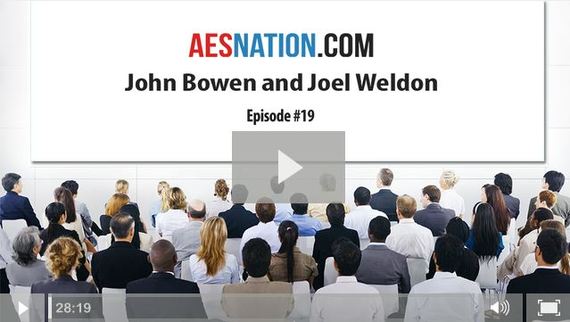How many meetings or presentations have you gone to where you're listening to the speaker and you turn to the person next to you and ask, "What is he talking about? Where is this going?"
Or maybe that speaker was you. Ever had an important presentation or meeting that was critical to your success, and you didn't make the impact you wanted to? Be honest. As entrepreneurs, we've all experienced that moment at least once in our careers -- probably more, if you're like me.
The good news: You can take steps right now that will ensure all your future communications -- from presentations, pitches and speeches to interviews and webinars -- are hugely compelling and enable you to deliver your message so that your audience will not only understand you but also take the action you want them to take.
These steps come courtesy of Joel Weldon, one of the world's most celebrated and revered keynote speakers and speech coaches. Throughout his 40-plus-year career, Joel has worked with a who's who of elite companies, organizations and individuals. He says his success can be summarized in 22 words: Speak to your audience about what they need, in an organized way they can follow, and get yourself out of the way.
Joel recently shared with me four of his best strategies for delivering impactful communications:
Strategy #1: Know your audience. The most ineffective speakers are those who talk about things that are irrelevant to the people in front of them. To avoid that, you must do your homework. Start by knowing who your audience will be, in detail, well before you get in front of them. When I asked Joel to speak to my mastermind group of top financial advisors, he immediately asked for lots more information. What kind of advisors, from which channels in the industry, would be there? What level of success have they achieved? What types of investors do they serve? What are they fearful or concerned about? What are their victories and achievements? He came away from that meeting with a rich, detailed picture of the people he would be speaking to.
The next time you're making any kind of presentation, get to know the audience deeply. Make a list of their needs, their fears, and their achievements. Learn all you can about them. In this age of Google and LinkedIn, you've got no excuse for not knowing all there is to know about your audience.
Strategy #2: Find the "Golden Thread" -- and repeat it. In a single sentence, write down the one main point or piece of advice you want your audience to come away with. This is your Golden Thread: a crystal clear message that will be impossible for your audience to misunderstand. As you prepare your content, think of interesting things you could say or bring up to support that one sentence. If a story or point doesn't help support or further that statement, don't use it. Otherwise, you'll muddy the waters.
Say, for example, that you are scheduled to speak to a group of business students who want to be entrepreneurs. You decide that the one big message you want to deliver to them is "Promise a lot, deliver even more." Every story and illustration you share should line up with that message. If you're going to talk for 30 minutes, be prepared to repeat that exact phrase 10 or 20 times. That will remind the audience what they should be focusing on, and will make it impossible for them to misunderstand where you're going.
Strategy #3: Connect with the "you" and eliminate the "me." Your content should plug into your audience, not your own ego -- so get yourself out of the way as much as possible. That doesn't mean you shouldn't talk about yourself. Quite the contrary. But when you share a story or example from your life and experience, tell it with the audience in mind and emphasize the lessons that they should be taking away from the story. To see if you're accomplishing this, review your speech or other content. The words "you," "your" and "yours" should appear a whole lot more often than "I," "me" and "mine."
Strategy #4: Get out in front of objections. Identify any big objections that your audience might have regarding your statements or beliefs. Then raise them yourself first when you speak. These are known as anticipatory statements, and they help shut down any negative responses to your message. If you're in front of those business school students, for example, you might say something like, "You might be sitting there thinking, 'Well I'm in school and don't have any money. How can I start a business?'" or, "I'm still in school. What can I do now? I've got to wait until I get out of school, right?" By proactively bringing up and addressing any elephants in the room yourself instead of having to defend against them later, you actually strengthen your position and perceived level of authority.
For even more insights and strategies from Joel Weldon as well as other hugely successful entrepreneurs, go to AES Nation.
